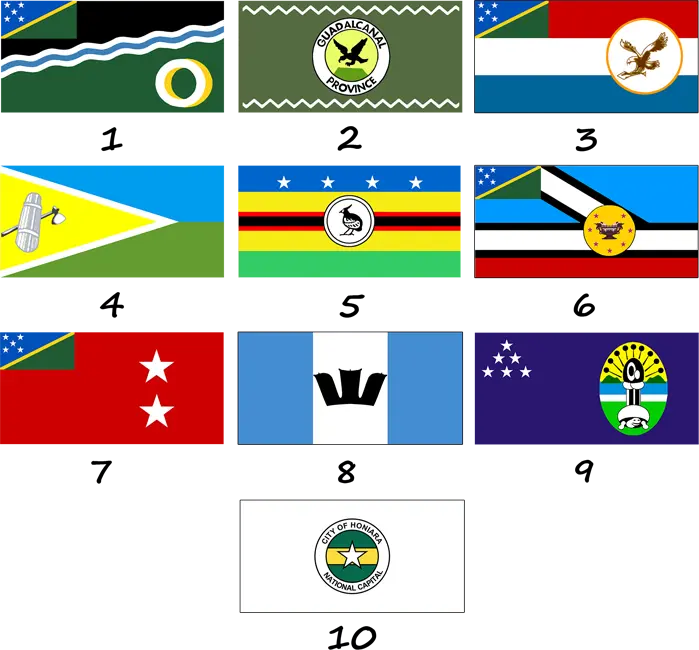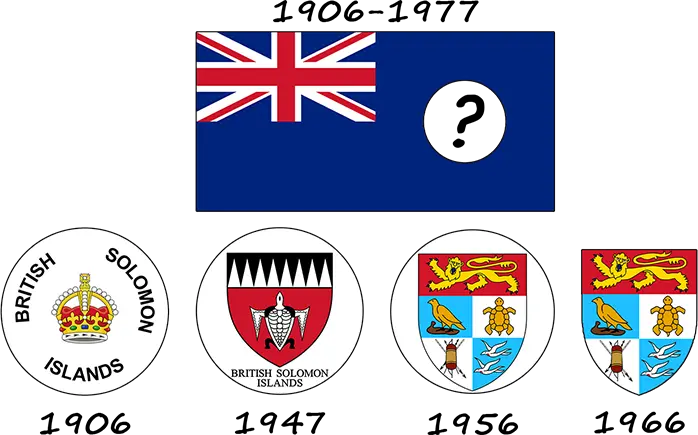The flag of Solomon Islands was adopted on November 18, 1977 and consists of two triangles of blue and green, separated by a diagonal yellow stripe, with five white stars in a canton on the blue half of the flag in the shape of the letter “X”.
The flag of Solomon Islands was adopted on November 18, 1977 and consists of two triangles of blue and green, separated by a diagonal yellow stripe, with five white stars in a canton on the blue half of the flag in the shape of the letter “X”.
At the time of independence in 1978, Solomon Islands consisted of six provinces: Central, Choisul, Guadalcanal, Isabel, Malaita, and Western Provinces. At that time, the administrative division of the country still reflected the structure created by the British colonial administration. In line with the population growth and the need for more efficient management of the territory, the Solomon Islands government gradually created new provinces.
Thus, in 1981, the province of Temotu was separated from the Central Province, and in 1983, the province of Makira-Ulava. In 1993, the Rennel and Bellona province gained its own status by separating from the Western Province. Today, the country consists of nine provinces and the capital city of Goniara, which has a separate administrative status.

Below is information about the 9 provinces of Solomon Islands, sorted from largest to smallest, with the percentage of the province's area of the total area of Solomon Islands, as well as its population. The tenth item is the capital, Goniara, as a separate administrative unit:
The history of the Solomon Islands flag is closely tied to the colonial period and the path to independence. The Solomon Islands were discovered by Europeans in 1568, when Spanish explorer Alvaro Mendaña de Neira first arrived on the archipelago, but colonization began much later. In the nineteenth century, Britain established a protectorate over the Solomon Islands, and in 1893 the Solomon Islands officially became a British colony. During this period, the British flag, known as the Union Jack, was used on the islands.

Subsequently, starting in 1906, Britain began to use its usual version of the colonial flag, namely a blue cloth with the Union Jack in the canton and the national emblem on the right side. In general, colonial flags went through several stages of development, each of which reflected changes in the status of the territory and its relationship with the United Kingdom:

In 1975, when the Solomon Islands were preparing to gain independence from the United Kingdom, a competition was announced to create a national flag. It was open to all islanders, and as a result, more than two hundred designs were submitted. John Hazeldine played a key role in developing the final design of the Solomon Islands flag. He took ideas and elements from the entries and developed the final version of the flag, making it more harmonious and ensuring compliance with heraldic requirements. It was his final version of the flag that was officially approved and adopted as the national symbol of Solomon Islands.
The flag of Solomon Islands was officially adopted on November 18, 1977, a year before the official declaration of independence from the United Kingdom.